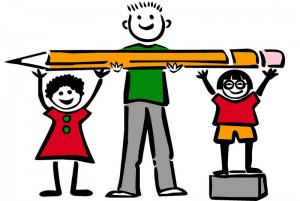PLN Facilitation Workshop
Today in my small group discussion, we discussed Carol Ann Tomlinson’s article, “Mapping a Route Toward Differentiated Instruction.” In this article, it follows three particular teachers, Mr. Appleton, Mrs. Baker and Ms. Cassell, and their different teaching styles.
I was thoroughly satisfied with how well the discussion went. Prior to the discussion, I made a lesson plan and had some guiding questions in order to generate a fruitful discussion. As a group we dissected each teacher and their teaching styles. We also talked about the strengths and weaknesses to the article.
When looking more closely at each teacher’s teaching style, we noticed how Mr. Appleton’s approach was very familiar to how the majority of our high school and undergrad was taught. Mr. Appleton was like the typical traditional teacher who focuses on textbook reading, note taking, and worksheet answering. Furthermore, if his students do not finish their worksheets in class, they will have to finish it for homework. Mr. Baker’s main form of instruction is lecture style, where he discusses the topic, expects his students to take notes on his lectures and then give quizzes and tests based on their notes, their textbook and a study sheet he hands out before the test (which clearly spells out what will be on the test).
With Mrs. Baker, as a group we liked her some of her ideas, like bringing in physical objects (pictures, videos/clips, architecture, food, wardrobe, stories/myths) to further the learning of ancient Rome. For a final project, Mrs. Baker gives her students 10 options to choose from like a poster, travel brochure, poems, create paper dolls, build architectural models, or make a map. We found her approach was fun but lacked focus.
Ms. Cassell on the other hand, “planned her year around a few key concepts that will help relate to, organize, and retain what they study in history.” “She has also developed principles or generalizations that govern or uncover how the concepts work. Further, for each unit, she has established a defined set of facts and terms that are essential for students to know to be literate and informed about the topic. She has listed skills for which she and the students are responsible as the year progresses. Finally, she has developed essential questions to intrigue her students and to cause them to engage with her in a quest for understanding” (p. 6). We found that Ms. Cassell’s approach really mirrored differentiated instruction. Her style had focus but enough room for flexibility.
In our group discussion, we found this resource very interesting and helpful by looking at the three teachers. At first, we thought Mrs. Baker’s teaching style was somewhat differentiated but after reading Ms. Cassell’s approach, realized Mrs. Baker’s style was not differentiated, instead hers lacked “a clear vision of the meaning of her subject, of the nature of her discipline and what it adds to human understanding, and of why it should matter to a young learner to study old times” (p. 6). When developing our unit plans and lesson plans, we have taken the same approach as Ms. Cassell in backward making. Other members in the group also suggested we incorporate Mrs. Baker’s diverse choice in projects, but ensuring all our units, lessons, and assignments have purpose and are align with our vision, big idea, and/or essential question.
Tomlinson, Carol Ann. (1999). Mapping a route toward differentiated instruction. Educational Leadership: Personalized Learning, 57(1). p. 1-8.


